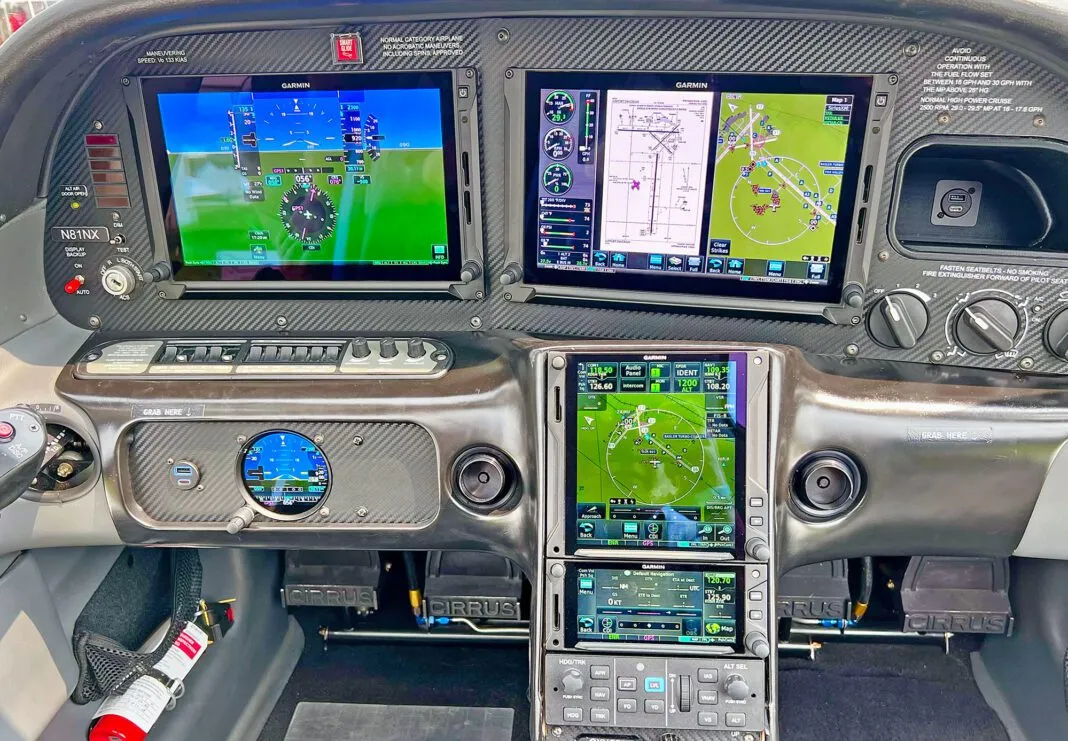I shot the image from the back of this 2007 Cirrus SR22 G3 Turbo at this year’s AirVenture. The video, and the short show report seemed worth shooting not really to show what a top-to-bottom retrofit Garmin system looks like in an old Cirrus, but more of a tip of the hat to a small avionics shop that invested big to fly the airplane out to exhibit it at the show. The shop—Nexair Avionics in Plymouth, Massachusetts—has been working the aging fleet of Cirrus models for years and has made a skillful retrofit niche with some pretty nice projects (not just Cirrus) that go beyond avionics, including interior upgrades. I’ve spent some time on Nexair’s busy shop floor—it’s tightly run. And that got me thinking about my Oshkosh Live segment with Garmin’s Kyle Ludwick.
We set up a couple of chairs in the display area of Garmin’s ambassador airplanes—nicely restored stuff, all sporting Garmin’s latest gear—and noodled Ludwick’s belief that the new gear in these old airplanes makes them safer. I countered that the equipment might make a vintage 1960 airplane more capable, but it could be a death trap for the untrained and confused owner. I always like talking shop with Ludwick because as an airplane owner, an airline FO and a Garmin GA product rep, it’s fun to contrast the two worlds—one with an outstanding safety record and another that’s just atrocious. Senior Editor Rick Durden digs deep into retrofit and maintenance safety in this issue, but Garmin’s Ludwick had some good advice worth sharing when it comes to the avionics retrofit planning, buying and delivery process, which should start by picking a dealer experienced working in the bowels of your model type. That’s an easy find if you own a basic Cessna, Piper and Mooney, but not so much with more complex machines.
As one example, since so many upgrades include autopilot installs, you want a shop that understands the plane’s control rigging. Recent wrecks where airplanes were returned to service with the flaps and trim systems mis-wired are downright frightening to even think about. Ask how many aircraft like yours the shop has worked on. It could save you money because the shop might get it done more quickly. As for learning the new panel, Ludwick and I both agreed that it’s not the shop’s job to provide avionics training, but good ones can help customers source it—before flying the upgraded airplane home. And speaking of flying it home, you might choose a shop based on its proximity to your home base because there’s a good chance you’ll be making multiple trips there—maybe for tweaking the installation and for doing software updates. Do you want to oversee the install process with visits to the shop while the airplane is there?
Before committing, Ludwick suggests getting a few quotes. “Each Garmin dealer might have a different way of installing the equipment, and ultimately, it’s a big piece of the install decision,” he said. Watch the Oshkosh Live segment on avionics upgrades.


